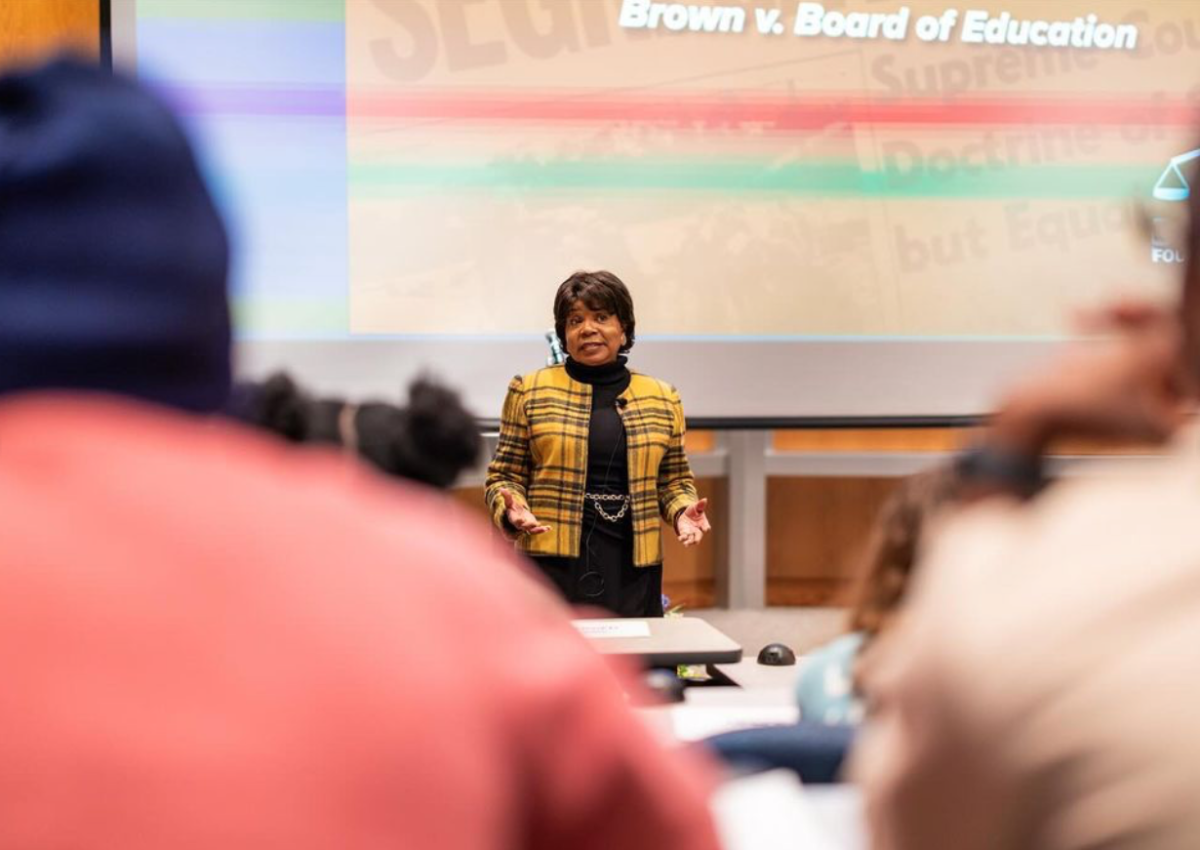On the evening of Feb. 22, Cheryl Brown-Henderson presented her keynote presentation entitled “Brown v. Board of Education: The Legacy Continues” in the Donahue Auditorium. Brown-Henderson is one of three daughters of the late Reverend Oliver L. Brown. In 1950, Rev. Brown filed suit on behalf of his children against the Topeka, Kansas Board of Education. This case would become a landmark decision for the United States, breaking generations of separate but equal education as well as kickstarting the Civil Rights movement.
Brown-Henderson’s keynote was framed by the idea that history does not have to be repeated. Rather, history is all that matters, and one needs to tell their own story. If they do not, then someone else will. Brown-Henderson advocates for this in the context of Brown v. Board, as well as for education at large. Naomi Sigg, vice president for Student Experience and Campus Belonging, was in attendance for the keynote address and found it especially compelling.
“As a Jesuit Catholic institution, learning Black history is not just significant; it’s central to our mission and identity,” Sigg said. “Understanding and honoring Black history is a profound act of justice, empathy and solidarity, reflecting our commitment to respecting and valuing all members of our community. I was thrilled to have Cheryl Brown-Henderson join us for the Voices of Inclusion Black History Month Keynote. Her powerful message illuminated the transformative power of storytelling, highlighting its pivotal role in amplifying diverse voices and perspectives within our shared societal narrative. She reminded us that if we do not tell our own stories, someone else will do it for us and that story may not reflect the truth of our lived experiences.”
Brown-Henderson’s presentation consisted of dispelling the myth of Brown v. Board. More specifically, the myth that the point of the case was for black students and white students to attend the same schools. This, to Brown-Henderson, is lacking. She argued that Brown v. Board was instead a culmination of cases in which black students were not getting the same resources that white students were in their schools. This led to multiple cases having to do with the myth of separate but equal, which all led up to the decision in the Brown case.
As she wrapped up her presentation, Brown-Henderson advocated for a better understanding of the implications of Brown v. Board, as well as more in-person advocacy from young people. She stated that, without Brown v. Board, the topic of race relations in the United States would have never been put squarely on the national agenda. This led to the Civil Rights movement. In addition, the people involved in this case stood up and showed up for their beliefs.
Brown-Henderson argued that this influenced foreign policy, and that in all senses of the phrase, the world was watching. The world is still watching the U.S. today, and there is no reason for Americans to continue on in the way we have been for the last few years.
She ended her talk with a powerful message to young people, saying, “You only have so many heartbeats, why waste your heartbeats on hate?”



